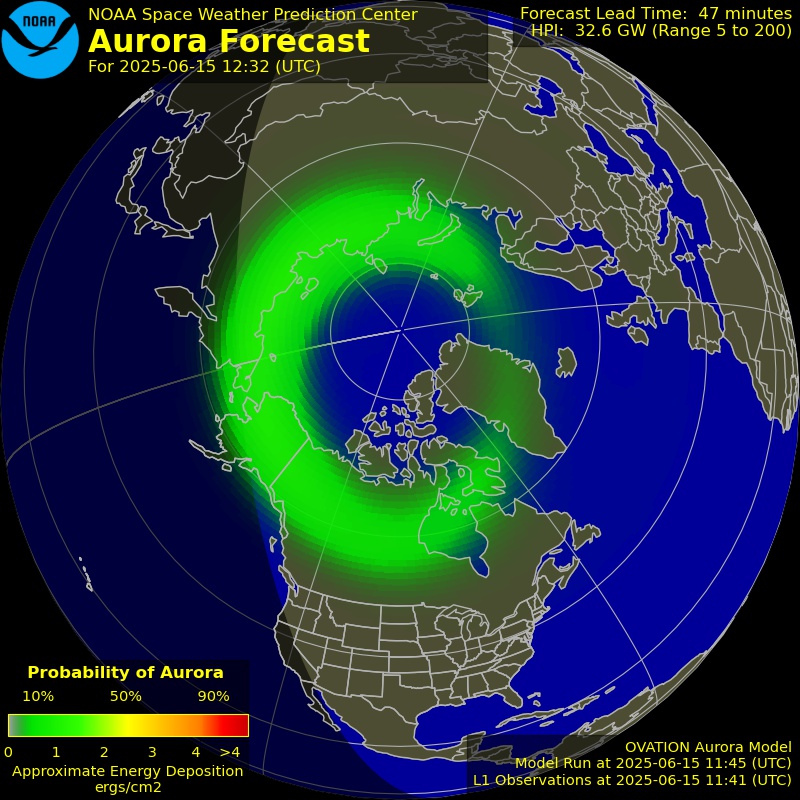
In order to witness the Northern Lights in the northern region of Ireland, a minimum of Kp 5 is required. For the best chances of seeing the Aurora in more southern locations of Ireland, it is recommended to look for Kp 6 and higher in the Aurora forecast for Ireland to avoid any disappointment.
Time
01-0404-0707-1010-1313-1616-1919-2222-01
Kp Index : 0 (low) - 9 (high)
Kp Index : 0 (low) - 9 (high)
Time
01-0404-0707-1010-1313-1616-1919-2222-01
Kp Index : 0 (low) - 9 (high)
Time
01-0404-0707-1010-1313-1616-1919-2222-01
As you stand on the windswept coast of Ireland, gazing up at the dark sky, you’re not just searching for a glimpse of the Northern Lights – you’re on a quest for a natural spectacle that will leave you awestruck. And with the right guidance, you can increase your chances of witnessing this phenomenon. In this article, we’ll explore into the world of Aurora forecast Ireland, providing you with the crucial information to plan your adventure. From tonight’s prediction to 3 and 27-day forecasts, we’ll help you navigate the Kp index, choose the best locations, and capture the perfect photos of this breathtaking display.
When and Where to See the Northern Lights in Ireland
To witness the breathtaking spectacle of the Northern Lights in Ireland, you’ll need to head to the country’s northernmost counties, where the night skies are darkest and the aurora activity is most frequent. The best time to see the Northern Lights in Ireland is typically between September and April, when the nights are longest and darkest.
Best Locations for Viewing the Aurora Borealis
Before you launch on your Northern Lights adventure, make sure to head to locations with minimal light pollution. Malin Head in Inishowen is widely regarded as the top location in Ireland for witnessing this phenomenon, closely followed by Mamore Gap, Dunree, and Ballyliffin, which all offer exceptional opportunities for capturing the Northern Lights.
Top Tips for Increasing Chances of Seeing the Northern Lights
When planning your Northern Lights expedition, keep in mind that clear skies, high aurora activity, and a new moon phase will significantly boost your chances of witnessing this natural wonder. Here are some additional tips to increase your chances:
- Avoid periods of full moon, as the bright moonlight can obscure the aurora.
- Dress warmly and be prepared to spend several hours outside.
- Find a location with minimal light pollution.
- Any patience and persistence will be rewarded with a spectacular display.
With these tips in mind, you’ll be well on your way to witnessing the awe-inspiring beauty of the Northern Lights in Ireland. By understanding the aurora forecast and optimizing your viewing conditions, you’ll increase your chances of experiencing this unforgettable phenomenon.
The Science Behind the Northern Lights
There’s more to the Northern Lights than just their breathtaking beauty. Understanding the science behind this phenomenon can enhance your experience and appreciation of this natural wonder.
What are Northern Lights?
Northerly winds carry charged particles from the sun towards the Earth’s magnetic field, causing a spectacular display of colored lights in the night sky. These particles collide with atoms and molecules in our atmosphere, resulting in the vibrant colors and patterns we see as the Northern Lights.
Colors and Shapes of the Aurora Borealis
Across the Irish skies, you may witness a kaleidoscope of colors, from soft green and blue hues to vibrant red and purple tones. The shapes and forms of the Northern Lights can vary greatly, ranging from diffuse glows to streaked curtains and swirling vortexes.
This phenomenon is not just aesthetically pleasing; it’s also a window into the Earth’s magnetic field and the solar wind. The colors and shapes of the Northern Lights can provide valuable insights into the intensity and direction of the solar wind, as well as the Earth’s magnetic field strength. As you gaze up at the night sky, you’re witnessing a dynamic interaction between our planet and the sun.
Understanding the Kp Index
If you’re eager to spot the Northern Lights in Ireland, you’ll need to wrap your head around the Kp Index, a vital tool for predicting aurora activity.
What is the Kp Index?
Around the world, scientists use the Kp Index to measure the intensity of geomagnetic storms, which directly impact the visibility of the Northern Lights. This 0-9 scale indicates the likelihood of aurora sightings, with higher numbers indicating more intense activity.
How Different Kp Indexes Look
Any seasoned aurora hunter will tell you that a Kp Index of 3 is a whole different ball game compared to a Kp Index of 7. The higher the number, the more vibrant and dynamic the Northern Lights will appear in the night sky.
Due to the varying levels of solar wind and magnetic field interactions, each Kp Index brings its unique visual characteristics. For instance, a Kp Index of 5 might produce a diffuse, greenish glow, while a Kp Index of 8 could unleash a breathtaking display of crimson and purple curtains dancing across the sky. As you explore the world of aurora forecasting, understanding these differences will help you plan your Northern Lights adventure in Ireland.
To see the Northern Lights in the northern part of Ireland you need a minimum of Kp 5. To avoid any disappointment aim for Aurora forecast in Ireland Kp 6 and higher.
Capturing the Northern Lights on Camera
For a truly unforgettable experience, capturing the Northern Lights on camera can be a thrilling way to preserve the memory of this natural wonder. With a little practice and patience, you can take stunning photos of the Aurora Borealis to cherish for years to come.
Guide to Photographing Northern Lights with a Camera
Handy tips and tricks are crucial when it comes to photographing the Northern Lights with a camera. Start by using a tripod to stabilize your camera, and set your camera to manual mode to adjust the ISO, aperture, and shutter speed according to the lighting conditions.
Guide to Photographing Northern Lights with a Smartphone
After all, not everyone carries a DSLR camera, but that doesn’t mean you can’t capture the magic of the Northern Lights with your smartphone. Simply use a tripod or stabilizer, and download a camera app that allows manual adjustments to exposure and focus.
Lights, camera, action! When photographing the Northern Lights with your smartphone, keep in mind that the camera’s sensor may struggle to capture the full range of colors and light intensity. To compensate, try using the HDR (High Dynamic Range) mode or adjusting the exposure compensation settings to +/- 1 or 2 stops. Don’t forget to check the Aurora forecast Ireland before heading out, and increase your chances of capturing the perfect shot!
Decoding Northern Lights Forecasts
Many aurora enthusiasts find themselves bewildered by the plethora of forecasts and data available online. With so many numbers, charts, and graphs, it’s easy to get lost in the noise. But fear not, dear reader, for we’re about to break down the basics of northern lights forecasts, making it easier for you to plan your next aurora adventure in Ireland.
Understanding Long-term 27-day and Short-term 3-day Forecasts
Among the various forecast types, the 27-day and 3-day forecasts are perhaps the most useful for aurora hunters. The 27-day forecast provides a broader outlook, indicating periods of high solar activity, while the 3-day forecast offers a more precise prediction of auroral activity. By understanding these forecasts, you can plan your viewing sessions with greater accuracy.
Tips for Beginners to Make the Most of Forecasts
Lights, camera, action! To increase your chances of witnessing the northern lights in Ireland, follow these simple tips:
-
- Monitor aurora forecast websites and apps for updates.
- Plan your viewing sessions during periods of high solar activity.
- Head to locations with minimal light pollution, such as Malin Head or Dunree.
This attention to detail will significantly improve your chances of capturing the perfect shot.
Due to the unpredictability of the northern lights, it’s vital to stay flexible and adapt to changing forecast conditions. By doing so, you’ll be well-prepared to make the most of your aurora-viewing experience in Ireland. Remember to dress warmly, bring your camera, and enjoy the celestial spectacle!
Why Seeing the Northern Lights is a Must
Despite the unpredictability of the Aurora forecast Ireland, witnessing the Northern Lights is an experience that will leave you awestruck and yearning for more. As you venture into the Irish wilderness, away from the city lights, you’ll be treated to a celestial spectacle that will etch itself into your memory forever.
Reasons to Witness this Natural Phenomenon
Along with the thrill of chasing an unpredictable phenomenon, you’ll also be rewarded with a deeper connection to the natural world. Imagine standing under the starry Irish sky, surrounded by the rugged landscape, and witnessing the ethereal dance of the Northern Lights – it’s an experience that will rekindle your sense of wonder and leave you feeling humbled by the vastness of the universe.
Final Words
Upon reflecting on your journey to witness the ethereal beauty of the Northern Lights in Ireland, you’ve now got the inside scoop on when and where to spot this phenomenon. From Malin Head to Dunree, you know the prime locations to capture those Instagram-worthy shots. With your newfound understanding of the Kp index and Aurora forecast Ireland, you’re equipped to increase your chances of seeing the Northern Lights in all their glory. So, grab your camera, dress warmly, and get ready to be awestruck by nature’s light show. Happy aurora hunting!
FAQ
Q: When can I see the Northern Lights in Ireland?
A: The Northern Lights, also known as Aurora Borealis, can be seen in Ireland on clear, dark nights from late August to early April. However, the best time to see them is from December to March when the nights are longest and darkest. It’s important to check the Aurora forecast Ireland to increase your chances of witnessing this phenomenon.
Q: How do I increase my chances of seeing the Northern Lights in Ireland?
A: To increase your chances of seeing the Northern Lights in Ireland, head to locations with minimal light pollution such as Malin Head in Inishowen, Dunree, Mamore Gap, and Ballyliffin. Check the Aurora forecast Ireland for tonight, 3-day, and 27-day outlook to plan your trip accordingly. A high Kp index (measuring the auroral activity) also increases your chances of seeing the Northern Lights. Finally, dress warmly, be patient, and try to avoid nights with full moon as it can make the lights harder to see.
Q: What is the difference between the 3-day and 27-day Northern Lights forecast, and how do I understand them?
A: The 3-day Northern Lights forecast provides a short-term outlook of auroral activity, showing the likelihood of seeing the Northern Lights in the next three days. The 27-day forecast, on the other hand, provides a long-term outlook, showing the auroral activity cycle that repeats every 27 days. Understanding these forecasts helps you plan your trip and increase your chances of seeing the Northern Lights. Look for high Kp indexes and peak activity periods to maximize your chances of witnessing this phenomenon.





